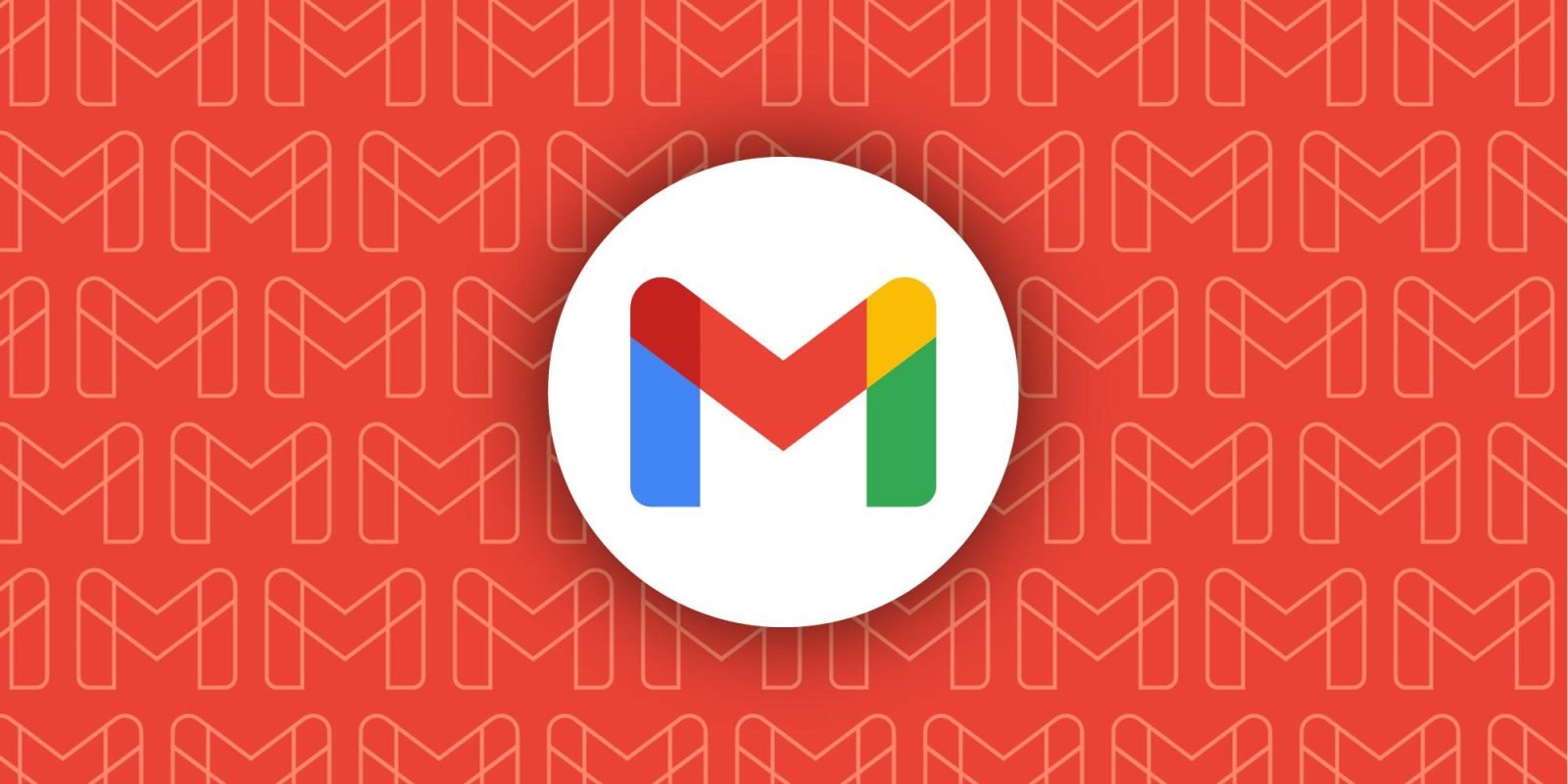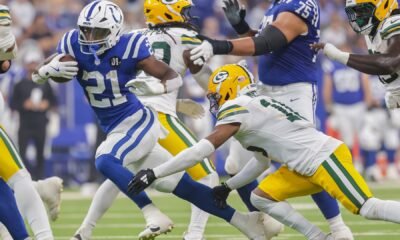Top Stories
Vince McMahon defends bringing Hulk Hogan back to WWE

Vince McMahon defended his decision to bring Hulk Hogan back to WWE in 2018, three years after the company severed ties with him once it was revealed that the pro wrestling icon had used a racial slur.
McMahon, who resigned from WWE and parent company TKO in January 2024 after a sexual misconduct lawsuit was filed against him by a former company employee, addressed his reaction to comments Hogan made during a sex tape and what happened in the aftermath during an interview for TMZ’s special on the Hulkster that aired Tuesday night on Fox.
McMahon had no issues bringing Hogan, who died at 71 in July, back to the WWE Hall of Fame and the company’s programming in 2018 after the multi-time world champion had paid a price in his eyes.
“I knew he wasn’t racist. I’ve been with him for so many years. He wasn’t a racist. He said some racist things. He should pay for that, and he did,” McMahon said on “TMZ Presents: The Real Hulk Hogan.” “In the end, I think everyone saw the real Hulk Hogan, Terry Bollea, and they felt, ‘Wait a minute, this guy doesn’t act like a racist. He’s not a racist.’ We all make mistakes. That was a big one, but he wasn’t a racist.”
In the 2007 sex tape that leaked in 2015, Hogan can be heard using the N-word multiple times and saying: “I guess we’re all a little racist.”
There is also audio of a 2008 conversation with his son Nick in prison, during which Hogan used racist language.
Hogan’s good friend Jimmy Hart also stated to TMZ that he did not believe Hogan was a racist. McMahon, who, along with Hogan, built WWE into a global wrestling power in the 1980s, could not believe the comments he heard from Hogan on the sex tape.
“It was unforgivable and I was aghast, ‘What happened?’” McMahon said. “When those things occurred, that’s not like him. ‘What in God’s name is going on?’”
It left WWE no choice but to shun Hogan.
“As soon as it happened, obviously, the company didn’t have anything to do with him anymore,” McMahon said. “We took him out of the Hall of Fame. You just don’t do those things.”
Hogan had called it a “glitch” and made attempts to apologize for his comments, but some, like former WWE star Mark Henry, have felt the legend did not go far enough to make things right. Henry refused to defend what Hogan said, but added that he offered Hogan and McMahon the idea of the Hulkster appearing at black colleges to help fix the situation at the time.
“Go and talk to them and be honest with your apology. He [Hogan] was like, ‘I’ve been advised not to talk about it no more.’ I said, ‘I think that’s bad advice,” Henry told TMZ.
McMahon, who has been persona non grata around WWE and its new parent company TKO after the lawsuit against him, was also asked if he had mixed emotions about not being invited to take part in any of the tributes WWE had for Hogan after his passing.
“It struck me that way as well,” McMahon said.
He called Hogan’s death a blow to my heart and was angry that his friend was booed during his last WWE appearance.
Top Stories
Kraft Heinz is splitting up, separating hot dogs from ketchup : NPR

Kraft Foods and Heinz merged into one company in 2015.
Gene J. Puskar/AP
hide caption
toggle caption
Gene J. Puskar/AP
Hot dogs go to the left; ketchup to the right. That’s Kraft Heinz, one of the world’s largest food conglomerates, splitting into two companies.
The breakup comes a decade after its messy mega-merger, orchestrated by billionaire investor Warren Buffett and considered one of his notable missteps. In recent weeks, both Kraft Heinz and Buffett’s Berkshire Hathaway took multibillion-dollar impairment charges reflecting the declining value of the food giant.
Kraft Heinz spent years slicing its costs while rivals invested in new ideas to keep up with changing consumer tastes. Budget-conscious shoppers have been buying more store-brand packaged foods, while people willing to spend extra often reach for fresher alternatives to processed products.
Now, Kraft Heinz executives hope the sum of two separate companies will be greater than the firm’s current value.
The first will focus on shelf-stable foods and include brands Heinz, Philadelphia and Kraft Mac & Cheese. The second will include more of what the company describes as groceries, with brands such as Oscar Mayer, Maxwell House, Capri Sun and Lunchables. The latter will be run by Kraft Heinz’ current CEO, Carlos Abrams-Rivera.
The merger went sour
Kraft Foods and H.J. Heinz merged in 2015 in a mega-deal led by the firms that controlled Heinz: Buffett’s Berkshire Hathaway and Brazilian private-equity firm 3G Capital.
3G was famous for its cost-cutting approach to consumer companies, having reinvigorated Burger King and beverage giant Anheuser-Busch. But the strategy failed to feed much growth at Kraft Heinz.
In 2019, after massive layoffs and lost sales, the company shocked Wall Street by writing down the value of marquee brands Oscar Mayer and Kraft by $15 billion. It faced shareholder lawsuits and an investigation by U.S. financial regulators.
In July, Kraft Heinz once again reported a drop in sales and a net loss of nearly $8 billion, largely thanks to a $9.3 billion impairment charge attributed to the declining share price. Soon after, Berkshire Hathaway also wrote down the value of its investment in Kraft Heinz with its own $3.8 billion impairment charge.
Buffett had maintained his financial stake even as 3G Capital completed its quiet exit from Kraft Heinz last year. In a rare admission, Buffett did acknowledge he “was wrong in a couple of ways on Kraft Heinz” and had overpaid in the deal, but praised the historic strength of the brands.
History is a who’s-who of food brands
Pittsburgh-based Heinz began in 1869 with grated horseradish that Henry J. Heinz packaged in a clear jar to show off its quality. But of course it was his ketchup – or “catsup” as it was known for a while – that brought Heinz fame, followed by baked beans.
Illinois-based Kraft brothers started their business selling cheese by horse and wagon in the early 1900s. During World War I, they supplied the U.S. Army with cheese processed to resist spoilage.
The Great Depression saw Kraft introducing the mayo-like Miracle Whip and the iconic mac and cheese mix, one of the first pre-packaged, shelf-stable dinners. The Kraft brothers also acquired Philadelphia – the cream cheese – and Velveeta. And in 1935, hot liquid cheese poured onto cold stainless steel and cut into squares set the stage for Kraft Singles cheese slices.
In the 1980s, Kraft was bought by tobacco giant Philip Morris during a food-company buying spree. That’s when Kraft ballooned to include Nabisco, Jell-O, Maxwell House and hot-dog maker Oscar Mayer.
In the early 2000s, Kraft again became its own publicly traded company. Later it spun off a separate snacking company, Mondelez, which makes Oreo cookies and Ritz crackers.
The big food meltdown
After its 2015 merger, Kraft Heinz wanted to jump-start growth by buying rival Unilever, maker of Hellmann’s mayonnaise and Ben & Jerry’s ice cream. But the European conglomerate rejected the deal.
Kraft Heinz tried to refresh its food offerings and address families’ growing health concerns. It cut the sugar level in its Capri Sun juices. It launched cheese-stuffed hot dogs, hot honey and plant-based cheese and mayo. It began making mac and cheese with natural food coloring. Last year, after reports about Lunchables’ sodium and heavy metals content, the company stopped offering the snack packs for school-lunch programs. It is now removing artificial food dyes from all U.S. products.
But years of high inflation have shoppers at Walmart, Costco and supermarket chains increasingly choosing private-label packaged foods, including in categories where brand names had long enjoyed high loyalty. And smaller startups continue to pose fierce competition with new takes on familiar snacks and meals.
In February, CEO Abrams-Rivera said Kraft Heinz was focusing its resources on faster-growing and more profitable products “to become a sauces and meals powerhouse.”
By mid-2025, the company’s shares lost two-thirds of their value from the post-merger peak. The company’s stock rose Tuesday on the news of the breakup.
Top Stories
Wake Up Babe, Dolby Vision 2 Just Dropped After 10 Years—Yes, It’s Powered by AI

After more than 10 years, Dolby is ready to bring its game-changing Dolby Vision tech into the future with (drum roll) Dolby Vision 2. As a part of IFA 2025, Dolby took the wraps off its sequel to Vision, which brings an array of new capabilities to the company’s proprietary HDR format.
Powering Dolby Vision 2 is an all-new engine that enables tools like “Content Intelligence.” Content Intelligence, as you may have guessed, uses AI to better adapt your TV’s picture to content that you’re watching, fine-tuning aspects based on not only what you’re watching but also where you’re watching it. Within content intelligence, there are several more specific tools, including precision blacks that adjust dark scenes on the fly, which, if it works, is great for anyone who loves OLED panels but has gripes with their performance on darker content.
There’s also—and this one is pretty cool—a light-sensing technology that, according to Dolby, monitors ambient lighting in your room and can automatically optimize your TV based on the lighting in your specific environment. As someone with an unusually dark apartment, I’m all for that, though I’m curious whether tech like this would drastically turn the brightness on my TV way down. I wouldn’t be mad about that, but maybe other people will? Lastly, there are tweaks to Dolby Vision’s handling of fast-paced content like gaming and live sports that are meant to better adjust motion control and white point, which controls the color temperature of whites on your screen.
Dolby is splitting Vision 2 into two tiers—Dolby Vision 2 and Dolby Vision 2 Max—and it says the latter will be available on the “highest performance TVs” and come with “additional premium features.” Gizmodo reached out to Dolby to clarify exactly what the difference is between those two tiers. Here’s what it said:
“Dolby Vision 2 Max includes capabilities designed to unlock the full capabilities and best picture quality on the highest-performing TVs. This includes capabilities such as bi-directional tone mapping, Authentic Motion, and more advanced tools tailored for enthusiasts.”
That tells us a little more, I guess, but from the sounds of it, Dolby Vision 2 Max will be designed to take advantage of the higher fidelity of expensive TVs, while Dolby Vision 2 is geared more toward “mainstream” TVs, in the company’s words. To start, Dolby says it will focus on the “mainstream” side of things, since it will begin rolling out Vision 2 on Hisense panels, though there’s no word on timing and availability quite yet. It says those Hisense TVs will be powered by the MediaTek Pentonic 800 chipset, though.
It’s been 10 years since the release of Dolby Vision back in the day, which allowed TVs to adjust and optimize content on your screen from scene to scene or even frame to frame and bridge the gap between cinema and at-home viewing. It’s been a long time in the works, but it’s no surprise to me that Dolby Vision 2 would be released now, given advancements in AI and their ability to understand context. More than that, though, Dolby Vision 2 should help better optimize current and future generations of TVs, which have obviously changed quite a bit since 2014. As always, though, seeing is believing, so we’ll be the judge of that when we can lay eyes on Dolby Vision 2-assisted content for ourselves.
Top Stories
Gmail for Android getting the full M3 Expressive container treatment

After the initial wave of M3 Expressive, the Gmail for Android redesign continues by placing each email in a container.
The Material 3 Expressive redesign that widely rolled out, which Google originally showed off in May, puts your inbox (and other lists) in one container.
The latest iteration places each email in its own container. There is a small gap between every item in the list view, with the first and last message featuring a more pronounced curvature.
As always, M3 Expressive changes are more visible on your device versus screenshots.
Old vs. new
There are also borders on the left and right of the screen. With this design, there is one connected, background layer for the bottom bar, hamburger button, and account switcher.
Meanwhile, those that have this redesign are seeing the search app bar, with the initial rollout featuring the old joined one. This matches Google Drive and Keep, which are also Workspace apps.
These containers join other M3 Expressive elements in Gmail like the bubbly swipe action animations, as well as the prominent Reply and Forward buttons at the bottom of messages.
Overall, it looks like we’re in for a stretch of Google updating various aspects with more Material 3 Expressive over time. In the case of Gmail, the Compose screen and homescreen widgets are unchanged right now.
More on M3 Expressive:
FTC: We use income earning auto affiliate links. More.
-

 Business4 days ago
Business4 days agoThe Guardian view on Trump and the Fed: independence is no substitute for accountability | Editorial
-
Tools & Platforms3 weeks ago
Building Trust in Military AI Starts with Opening the Black Box – War on the Rocks
-

 Ethics & Policy1 month ago
Ethics & Policy1 month agoSDAIA Supports Saudi Arabia’s Leadership in Shaping Global AI Ethics, Policy, and Research – وكالة الأنباء السعودية
-

 Events & Conferences3 months ago
Events & Conferences3 months agoJourney to 1000 models: Scaling Instagram’s recommendation system
-

 Jobs & Careers2 months ago
Jobs & Careers2 months agoMumbai-based Perplexity Alternative Has 60k+ Users Without Funding
-

 Education2 months ago
Education2 months agoVEX Robotics launches AI-powered classroom robotics system
-

 Funding & Business2 months ago
Funding & Business2 months agoKayak and Expedia race to build AI travel agents that turn social posts into itineraries
-

 Podcasts & Talks2 months ago
Podcasts & Talks2 months agoHappy 4th of July! 🎆 Made with Veo 3 in Gemini
-

 Education2 months ago
Education2 months agoAERDF highlights the latest PreK-12 discoveries and inventions
-

 Podcasts & Talks2 months ago
Podcasts & Talks2 months agoOpenAI 🤝 @teamganassi




















